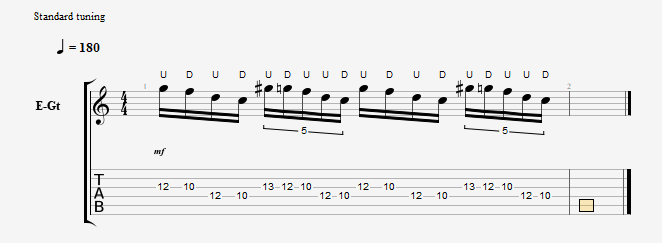Haha, thanks. I’ve spent a long time (years) trying to develop a really relaxed/effortless picking motion without tension in the arm, keeping it controlled and gradually raising the metronome speed. It’s still in progress. Practicing with a fairly high gain tone really helped me get cleaner, as it amplifies the unwanted string noise and forces you to learn good muting technique.
Thanks man. I honestly doubt I’m doing DWPS with swiping because that would suggest I could play DWPS licks with ease, and I really can’t, they’re very uncomfortable and my pick gets choked up in the strings. To be honest I don’t know what I’m doing.
I’ve never even thought of this before. Since the flat edge of my hand is resting on the bridge, and arm on the body of the guitar, wouldn’t my approach angle follow the angle of the guitar anyway? Also if I’ve understood you correctly, the fact that the top of my guitar is further back (towards me) should make DWPS easier instead of harder, right?
I’m having a jam with my band next weekend, if everything goes to plan I’m gonna be able to borrow a far more high-tech camera from one of the guys and get a way better video then.



 There are difficult things you’re doing “naturally” that work, and I’m interested in the details of how.
There are difficult things you’re doing “naturally” that work, and I’m interested in the details of how.